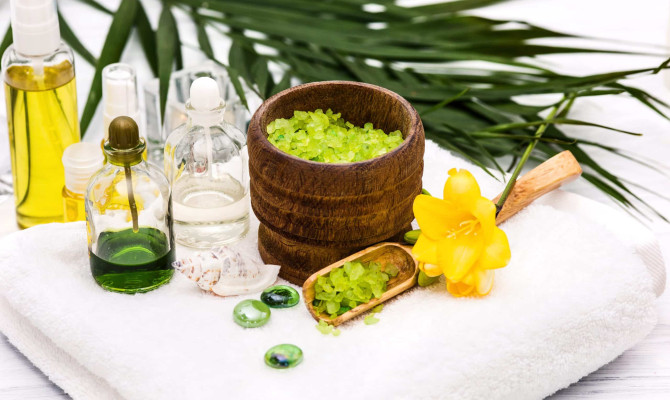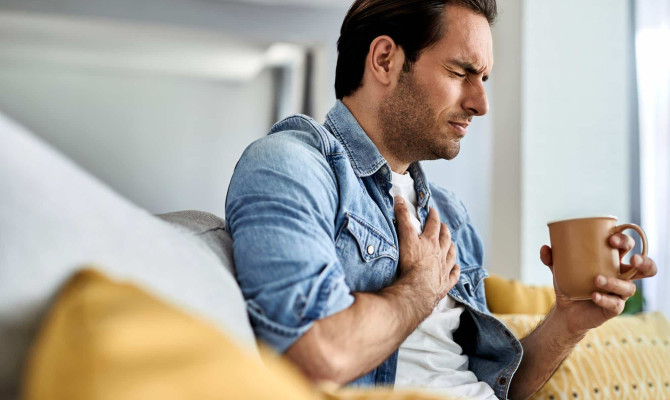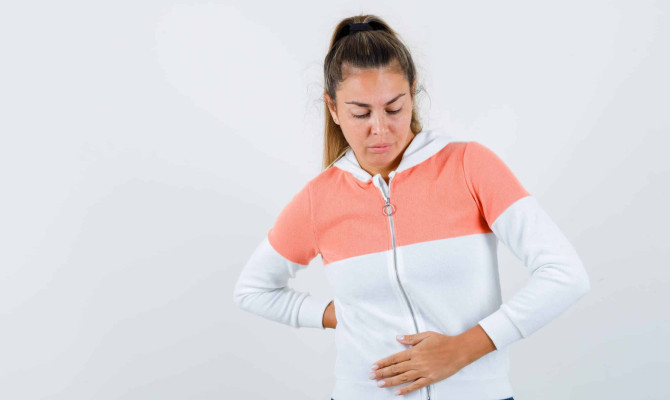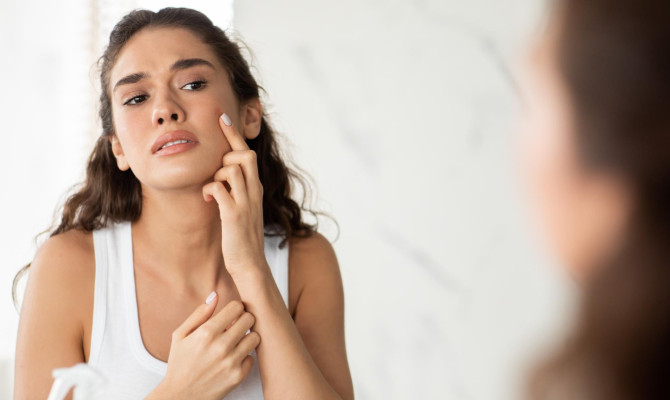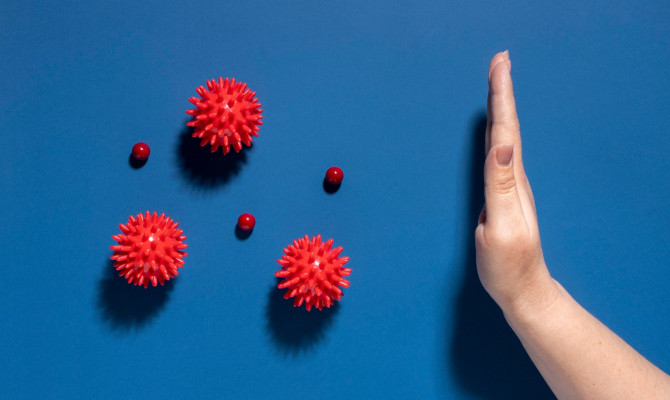Understanding Rosacea: Causes, Symptoms, Types and Treatment

- Rosacea
- 29 Aug 2023
Introduction
Introduction:
Rosacea is a persistent (chronic) skin ailment that results in inflammation and dilated blood vessels. It commonly affects the face and eyes. It usually appears after the age of 30 and is particularly common in those with lighter skin, however it may appear in people of any age. It presents as redness, visible blood vessels, and sometimes acne-like outbreaks. It usually worsens gradually over time and to varying degrees.
Prevalence
How Common is Rosacea?
Rosacea affects around more than 14 million individuals in the U.S. Anyone may get rosacea; however, the following categories are more likely to do so: 1Prevalence | Researched based study from National Institutes of Health
- Older and middle-aged individuals.
- Men seem to experience it more severely than women.
- People with light complexion. Face redness may not be recognized in people with darker complexion since it might be concealed by skin color.
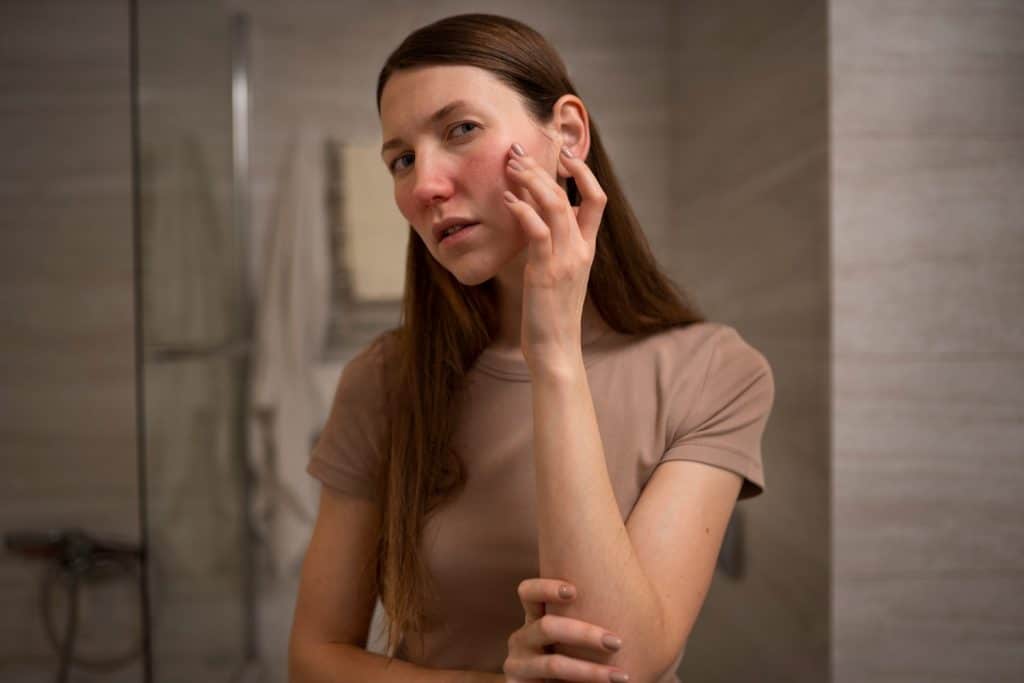
Causes
Causes of Rosacea:
Although the precise reason for rosacea is not completely known, it is thought that a number of variables have a role in the onset of this chronic skin disorder. They are:
- Genetics
- Irregularities in the blood vessels
- Dysfunction of the immune system
- Environment related triggers
- Demodex Mites
- Neurovascular Dysregulation
- Peptides of cathelicidin
- Infection with H pylori
Genetics
- A history of rosacea in your family is a big risk factor.
- There may be a genetic relationship between having rosacea and getting it yourself if you have close relatives who have the disease.
Irregularities in the Blood Vessels
- Rosacea is linked to irregularities in the face’s blood vessels.
- In response to certain stimuli, the blood vessels may widen and become more sensitive, resulting in an increase in blood flow, redness, and flushing.
Dysfunction of the Immune System
- The inflammatory skin conditions rosacea and immune system dysregulation may be related.
Environment-Related Triggers
- Rosacea symptoms can be due to a variety of environmental causes.
- Common triggers include being in the sun, being in very hot or cold conditions, wind, humidity, eating spicy meals, drinking alcohol, being under stress, and using specific skincare products.
Demodex Mites
- Demodex mites live on people’s skin in their natural habitat.
- The development of rosacea may be influenced by an overabundance of these mites or an aberrant immunological reaction to their presence.
Neurovascular Dysregulation
- Rosacea symptoms might be influenced by dysfunction in the neurological system that regulates blood flow to the face blood vessels.
Peptides of cathelicidin
- Rosacea inflammation may be linked to an overproduction of cathelicidins.
- Cathelicidins is a class of peptides involved in the immunological response.
Infection with Helicobacter pylori
- Some research has shown a possible connection between the skin condition rosacea and the bacteria Helicobacter pylori, which may result in stomach ulcers.
It’s important to remember that each person’s risk for developing rosacea will likely differ depending on a complex interaction of these variables.
What nutritional deficit results in rosacea?
Rosacea may be brought on by vitamin deficiencies, especially those affecting B vitamins like B-12.
Is rosacea a contagious disease?
Rosacea is not a contagious disease. You cannot get this skin ailment from someone who already has it since it is not contagious.
Symptoms
Symptoms of rosacea:
Rosacea’s main signs and symptoms are as follows: 2Symptoms | Researched based study from Health Direct
- Skin redness
- Flushing
- Thickening of the skin
- Telangiectasia
- Dry, Rough Skin
- Pustules and Papules
- Ocular rosacea
- Burning or Stinging sensation
- Swelling
Skin redness:
- Persistent redness on the cheeks, nose, forehead, and chin is noticed. The redness may come and go and become worse due to different triggering factors.
Flushing:
- Facial redness and warmth that occurs often or suddenly and is frequently brought on by heat, sunlight, spicy food, alcohol, mental stress, or hot liquids.
Thickening of the skin:
- The skin may get thicker, particularly on the nose, giving it an bulous look. It mainly affects men and is one of the most severe symptoms.
Telangiectasia (Visible Blood Vessels):
- On the affected skin regions, tiny, noticeable blood vessels may protrude, giving them a spider-like appearance.
Dry, Rough Skin:
- Rosacea can lead to dry, rough, and flaky skin in the affected areas.
Pustules and Papules:
- Similar to acne, some rosacea sufferers may have little red spots on their faces called papules and pustules. But unlike acne, these pimples are not brought on by the same causative factors.
Visual Issues (Ocular Rosacea):
- Rosacea may have an impact on the eyes, resulting in symptoms including dryness, redness, grittiness, sensitivity to light, and a sense that something is lodged in the eye.
Burning or Stinging sensation:
- Especially during flare-ups, the afflicted skin may feel hot, blistering, or stinging.
Swelling:
- Facial swelling, especially on the nose, may be seen in some cases. This condition is called rhinophyma, while it is less common than other rosacea symptoms.
It’s important to remember that if rosacea symptoms are not treated or are exposed to triggers, they may become worse over time.
Can rosacea be affected by hormone changes?
- Hormonal changes, such as those that occur during pregnancy or menopause, may show rosacea symptoms in certain people. They might exacerbate them in preexisting rosacea.
Types
Types of Rosacea:
Rosacea is classified into distinct subtypes according to the specific regions it affects and the visual features of the skin inflammation: 3Types | Researched based study from Pfizer
- Erythematotelangiectatic Rosacea (ETR)
- Papulopustular rosacea
- Phymatous rosacea
- Ocular rosacea
Erythematotelangiectatic Rosacea (ETR)
- ETR, also referred to as vascular rosacea, is the common form of rosacea.
- It results in localized areas of erythematous skin on the facial region. Visible blood vessels are seen in moderate to severe cases.
Papulopustular rosacea
- Papulopustular rosacea, also known as inflammatory rosacea, is characterized by facial erythema and the presence of small pustules resembling acne.
Phymatous rosacea
- Phymatous rosacea is a severe variant of rosacea characterized by thickening and bumpiness of the facial skin.
- It primarily affects the nasal area, but it can also manifest on other facial regions such as the chin, cheeks, forehead, and ears.
- Individuals with phymatous rosacea may subsequently develop rhinophyma, a condition characterized by the enlargement and inflammation of the nose due to damaged connective tissue and oil glands.
Ocular rosacea:
- Ocular rosacea impacts the eyes and eyelids. Skin symptoms may be present or absent. Untreated ocular rosacea can lead to ocular damage and impair the vision.
Diagnosis
Diagnosis:
The diagnosis of rosacea is done through an evaluation of the patient’s medical history, assessment of the characteristic signs/symptoms and physical examination.
Physical Examination:
- Dermatologist will examine the patient’s skin in the affected areas, focusing on identifying the indicators of rosacea, including facial redness, visible blood vessels, papules, pustules, and other associated symptoms.
Differential Diagnosis:
- Dermatologists will conduct a differential diagnosis to exclude other potential skin conditions such as acne, lupus, and seborrheic dermatitis, as they show resemblance to rosacea.
Trigger Assessment:
- Dermatologists will ask you about the potential exacerbating factors, including sunlight exposure, consumption of spicy foods and alcohol, stress levels, and use of specific skincare products.
What kind of bacteria produce rosacea?
- Microorganisms that cause rosacea include Demodex folliculorum mites, Staphylococcus epidermidis, Helicobacter pylori, Demodex-associated bacteria, Bacillus oleronius and Chlamydia pneumoniae.
Treatment
Treatment of Rosacea:
The goal of rosacea therapy is to control the condition’s symptoms, lessen flare-ups, and enhance the skin’s overall look. 4Treatment | Researched based study from Veterans Health Library
A dermatologist or other healthcare provider with expertise in treating skin issues will suggest the best courses of action. Here are some methods for treating rosacea:
Topical antibiotics:
- To lessen inflammation and redness, doctors may prescribe topical creams or gels.
- These could include topical retinoids or antibiotics (such metronidazole and azelaic acid).
Oral antibiotics:
- Oral antibiotics (such as doxycycline, minocycline) may be recommended to control inflammation and decrease bacteria on the skin in moderate to severe instances or when papules and pustules are present.
Adjuvant Therapy:
- For more effective outcomes, a mix of topical and oral drugs may be used in certain circumstances.
Laser and light treatment:
- Redness and visible blood vessels may be reduced using certain light and laser therapy.
- Vascular lasers and intense pulsed light (IPL) are often used for this purpose.
Anti-parasitic:
- A group of drugs, which includes Soolantra (ivermectin), that are used to treat parasitic infections.
Vasoconstrictors:
- A class of drugs, including the blood vessel-narrowing drugs Rhofade (oxymetazoline) and Mirvaso (brimonidine),
Ocular Rosacea:
- Artificial tears, antibiotic eye drops, or drugs to lessen eye inflammation, may be given for those with ocular rosacea.
Steer clear of the triggers
- It’s important to find and stay away from irritants that aggravate rosacea symptoms. Patients are often instructed to maintain a journal in order to track their triggers and adjust their lifestyle as necessary.
Surgical Techniques:
- Severely thickened skin caused on by phymatous rosacea may be removed by surgery using a scalpel or an abrasion instrument. This course of therapy is often reserved for cases with severe rosacea that seriously hinder quality of life.
- The nose or other facial features with thicker skin (rhinophyma) may also need to be reshaped during the surgery.
Home Remedies

Home treatments for Rosacea may be effective:
Turmeric:
- Anti-inflammatory and antioxidant properties of turmeric do everything.
- It is one of the best rosacea treatments.
- Experts recommend taking one scoop of turmeric in water every day to prevent skin irritation.
Carrots and beetroots:
- The finest iron sources are carrots and beets.
- Carrots and beets control rosacea.
- Consume them daily with meals or drinks.
Ashwagandha:
- Ashwagandha is called east Indian ginseng.
- Ashwagandha’ treats rosacea skin infections.
- Anti-inflammatory, it strengthens skin and removes rosacea puss.
Honey:
- Honey naturally reduces rosacea’s red spots and immediately fights rosacea-causing microorganisms and prevents its spread.
- Apply honey on the face before bathing or sleeping and wash off with warm water after 1–2 hours.
Fenugreek:
- Fenugreek contains vitamin C, folic acid, A, K, iron, potassium, and calcium.
- This herb erases facial redness. It also reduces itching. Consume it every day with meals.
Which foods should I limit if I have rosacea?
Common meals and drinks that are known to cause flare-ups of rosacea in certain people include:
- Spicy Foods
- Alcohol
- Hot Drinks
- Spicy and Hot Soups
- Dairy Items
- Chocolate
- Tomatoes and products made from tomatoes
- Citrus Fruits
- Fermented foods and vinegar
- Prepared Meats
Not everyone with rosacea will respond to these foods, and different people may have different triggers. maintaining a meal journal and recording any responses or flare-ups after
Can vitamin C help with rosacea?
- Vitamin C has anti-inflammatory qualities that assist to heal and soothe irritated skin; therefore, it may be used to treat rosacea.
- Given that it protects your skin from UV damage and free radicals that may be aggravating your skin, vitamin C is the finest substance for reducing rosacea flare-ups.
Prevention
Prevention of Rosacea:
Rosacea flare-ups may be prevented by recognizing and avoiding factors that aggravate the illness.
Here are a few basic recommendations to help stop rosacea flare-ups:
- Protection against the sun
- Simple skin care
- Regularly moisturize
- Prevent triggers
- Reduce stress
- Take fewer hot baths and showers
- Make smart makeup Choices
- Restrict alcohol and caffeine intake
- Keep your body away from Overheating
- Pay Attention to Medication
- Consistent follow-up
Protection against the sun:
- Wear broad-spectrum sunscreen every day, even on overcast days, to shield your skin from the sun’s damaging UV rays.
Simple Skincare:
- Use gentle, non-irritating skin care products free of alcohol, perfumes, and harsh chemicals.
Regularly moisturize:
- To preserve its barrier properties and lessen dryness and irritation, keep your skin hydrated.
Prevent Triggers
- Determine your unique triggers and make an effort to avoid them.
- Spicy meals, alcohol, hot drinks, very high or low temperatures, wind, and mental stress are some common triggers.
Reduce Stress
- Practice stress-reduction methods like yoga, meditation, deep breathing, or relaxing hobbies since stress may make rosacea symptoms worse.
Take fewer hot baths and showers
- Rosacea-prone skin’s redness and irritation might become worse while using hot water.
Make Smart Makeup Choices
- Use non-comedogenic and hypoallergenic cosmetics. Creams or cosmetics with a green tinge may help neutralize redness.
Restrict alcohol and caffeine intake
- Caffeine and alcohol restrictions may help avoid or lessen flushing episodes.
Keep your body away from Overheating
- Prevent overheating by taking measures like remaining in cool areas, particularly during hot weather or strenuous physical activity.
Pay Attention to Medication:
- If applied on the face for a lengthy period of time, several drugs, such as topical corticosteroids, may make rosacea symptoms worse.
Consistent Follow-Ups
- Follow your dermatologist’s treatment advice and keep in contact with them.
- Regular check-ups may aid in monitoring your health and, if required, adjusting the treatment strategy.
Keep in mind that avoiding rosacea flares requires a proactive strategy and customized treatment. Consult a medical dermatologist for an accurate diagnosis and better advice on how to manage your illness if you have chronic face redness or other associated rosacea symptoms.
What foods help to lessen facial redness?
- Flavonoids, particularly the purple pigment anthocyanins, are potent antioxidants.
- The dark purple fruits and vegetables are especially helpful for reducing skin redness.
Complications
Complications of Rosacea:
Complications of rosacea include: 5Complications | Researched based study from National Institutes of Health
- Phymatous rosacea
- Physical discomfort due to ocular symptoms
- Inflammatory eye diseases like sclerokeratitis and blepharokeratoconjunctivitis
- Trigger avoidance might lead to lifestyle restrictions
- Negative psychological effects such as depression, increased anxiety, social isolation and low self-esteem
Prognosis
Prognosis:
Rosacea does not pose a life-threatening concern, and the prognosis is favorable in general. However, it could result in anxiety and sadness. Patients may have chronic erythema and irreversible scarring if their condition is not managed. Flare-ups could occur on a weekly or monthly basis. It tends to worsen over time if untreated. Heat, spicy meals, alcohol, and other triggers may also make it worse. Rosacea has no known therapy; however, it is possible to decrease symptoms. Self-care will help you control it. Discover your triggers, then take the necessary precautions to treat your skin carefully.
Any feedback on this article?
 This Articles content was accurate
This Articles content was accurate Very Informative Article
Very Informative Article I have a question or a comment
I have a question or a comment
 This article contains inaccurate content
This article contains inaccurate content This article was not helpful
This article was not helpful I have a question or a comment
I have a question or a comment
We appreciate your helpful feedback!
Checkout our social pages
References
-
National Institute of Hydrology
Prevalence
-
Health Direct
Symptoms
-
Pfizer
Types
-
Veterans Health Library
Treatment
-
National Institute of Hydrology
Complications















